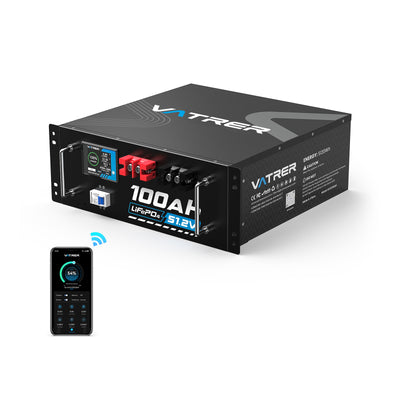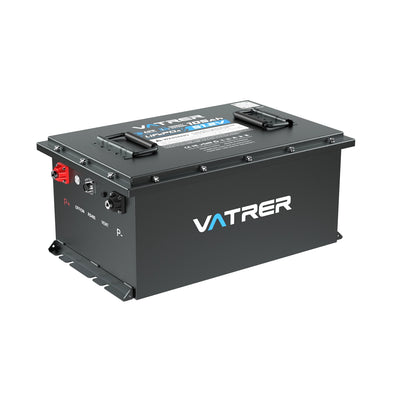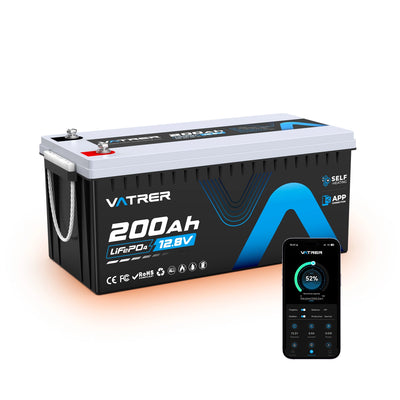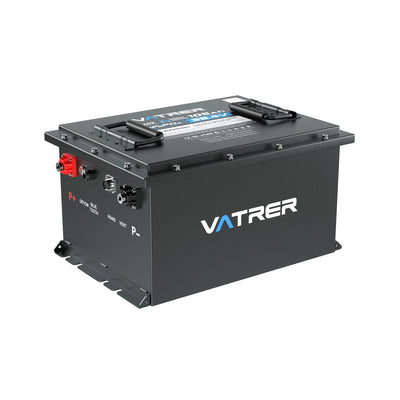
What Is a Group 24 Deep Cycle Battery?
Selecting the right battery for your motorhome, boat, or solar installation can feel like picking your way through a maze of terms such as group size, amp hours, and deep cycle. Whether you are preparing for a short camping break or supplying power to a remote solar system, a Group 24 deep cycle battery is a widely used option for dependable, long-duration power. But what sets it apart, and how can you be sure it suits your set-up? Let’s explore this together.
This guide outlines the essentials of Group 24 batteries and offers clear, practical explanations to help you choose the most suitable Group 24 deep cycle battery for your specific power requirements.

What Do the Various Numbers on a Battery Pack Indicate?
Think of a battery’s group size like a made-to-measure jacket: it has to fit the allocated compartment and connect correctly if it is to supply power safely and efficiently.
Standardised by the Battery Council International (BCI), the group size defines a battery’s external dimensions and terminal layout. For a Group 24 battery, this refers to specific sizes and configurations such as 24F, 24H, 24R, and 24T, designed to suit particular vehicles or systems including motorhomes and boats.
Choosing the correct 24 pack deep cycle battery helps to ensure a straightforward installation and reliable operation. If the battery pack size does not match, you may end up with loose terminals, poor contact, or insufficient power delivery. Always check your vehicle or equipment handbook, or the label of the original battery, to confirm the correct battery pack size before ordering a replacement.
Not sure how to tell a standard battery from a deep cycle one? You can read more here: What is a deep cycle battery
What Is a Group 24 Deep Cycle Battery?
A Group 24 deep cycle battery is comparable to a long-distance runner, designed to deliver a steady flow of energy over time rather than the short, powerful burst of a starter battery.
Instead of focusing on high cold cranking amps (CCA) for engine ignition, these batteries are optimised for deep discharge and recharge, making them well suited for motorhomes, boats, solar energy systems, and certain medical devices.
Typical dimensions are around 10.5 inches (26.7 cm) in length, 6.2 inches (16.2 cm) in width, and 8.9 inches (22.6 cm) in height. Within this group, variants such as 24F, 24H, 24R, and 24T have slightly different measurements and terminal positions.
The 24F variant uses top-post terminals, whereas the 24R reverses the terminal orientation. The 24H and 24T versions may have marginally different height or width, for instance the 24H at approximately 10.3 x 6.8 x 9.0 inches.
Group 24 deep cycle batteries are available as flooded lead-acid batteries, Group 24 AGM deep cycle batteries, and modern lithium-ion options such as the Vatrer 12V 100Ah 24 group bluetooth LiFePO4 lithium deep cycle battery, which measures 10.24 x 6.61 x 8.23 inches and is designed to meet BCI requirements.

What Are the Key Parameters of Group 24 Deep Cycle Batteries?
To select the most appropriate Group 24 deep cycle battery, it is important to understand the main technical specifications. The table below compares lead-acid and lithium-ion variants and highlights the principal differences:
| Specification | Lead-Acid Group 24 | Lithium-ion Group 24 | |
|---|---|---|---|
| Voltage | 12V | 12.8V | |
| Capacity (Ah) | 60-100Ah | Up to 100Ah | |
| Cycle Life | 200-500 cycles | 2,000-5,000 cycles | |
| Weight (lbs) | 25-40 lbs | 23 lbs | |
| Discharge Rate | 5-20A (sustained) | 100A (sustained) | |
| Temperature Range | 32°F to 104°F / 0°C to 40°C | -4°F to 140°F / -20°C to 60°C | |
In most cases, Group 24 batteries operate at 12 volts (12.8V for lithium-ion models) and offer capacities between 60 and 100 amp hours (Ah). Lead-acid versions, including Group 24 AGM deep cycle batteries, typically provide around 200–500 charge and discharge cycles.
By contrast, lithium-ion Group 24 batteries can deliver roughly 2,000–5,000 cycles, making them well suited to long-term, intensive use. Their higher discharge capability supports consistent power delivery for Group 24 deep cycle marine batteries or Group 24 deep cycle RV batteries. Lithium models such as those from Vatrer maintain performance across a wide temperature range from -4°F to 140°F (-20°C to 60°C), whereas lead-acid batteries are usually limited to 32°F to 104°F (0°C to 40°C), which makes lithium more adaptable in demanding conditions.
Do Group 24 Batteries Meet Your Requirements?
Comparing the strengths and weaknesses of Group 24 deep cycle batteries helps you judge whether they are appropriate for your particular application.
What are their advantages?
- Versatility: Can supply power to touring vehicles, back-up power systems, medical equipment, solar installations, and a wide range of marine uses.
- Deep Cycling Capability: Designed to withstand repeated charge and discharge cycles, which is essential for deep cycle tasks such as motorhome camping or boating trips.
- Moderate Capacity: Provides 60-100Ah, offering a good compromise between available power and overall size for medium-demand systems.
- Wide Availability: Group 24 batteries are widely stocked, making replacements and upgrades relatively straightforward.
What are their limitations?
- Size and Weight: Lead-acid Group 24 units are comparatively large and heavy (typically 25-40 lbs), which may be less suitable for very compact or weight-sensitive installations.
- Lower Cranking Amps: Their cold cranking amp (CCA) ratings are modest, so they are not ideal as primary starter batteries, especially in cold conditions.
- Maintenance for Lead-Acid: Traditional flooded lead-acid batteries require periodic checks and topping up with distilled water, unlike maintenance-free lithium-ion or AGM alternatives.
- Installation Precision: Correct positioning and alignment of terminals is essential to avoid strain on cables and ensure safe operation.
Modern group 24 lithium battery solutions address many of these drawbacks. They are lighter, have a significantly longer service life, and incorporate low-temperature protection and advanced BMS safety functions, making them an excellent option for improving both efficiency and user convenience.
What Are the Benefits of Choosing Lithium Group 24 Deep Cycle Batteries
Upgrading to a lithium Group 24 deep cycle battery based on LiFePO4 technology is a bit like swapping an old, bulky lantern for a slim, modern torch.
For instance, the Vatrer 12V 100Ah group 24 bluetooth LiFePO4 lithium deep cycle battery weighs only 23 lbs and is rated for approximately 2,000–5,000 cycles.
These batteries can be recharged more quickly, typically in 2–4 hours compared with 6–8 hours for many lead-acid batteries, and they do not suffer from a memory effect, so they can be topped up at any time. Routine maintenance is minimal, and they may be stored at around 50% state of charge when not in use. An integrated battery management system (BMS) protects against issues such as over-discharge, overcurrent, overheating, and thermal runaway, which enhances safety in demanding settings such as marine environments or off-grid systems. In addition, they are more environmentally considerate, with up to 95% of their components recyclable, whereas lead-acid batteries carry a higher risk of hazardous waste if not disposed of correctly.
Powering Your Adventures with Group 24 Batteries
Group 24 deep cycle batteries can be a reliable companion for your journeys on land and at sea.
- They function as habitation or “house” batteries in Group 24 deep cycle RV batteries for Class B camper vans (such as the Winnebago Travato) or compact touring caravans, powering devices like LED lighting, refrigerators, and ventilation fans during extended stays.
- On the water, Group 24 deep cycle marine batteries supply trolling motors on smaller craft such as bass boats or pontoons, and can be paired with 12V motors including Minn Kota Endura models (30–50 lbs thrust).
- They can also be integrated into solar systems with 100–200W solar panels for off-grid cabins, providing a stable energy source for lighting and small domestic appliances.
For example, a Group 24 battery can keep an electric kayak motor running for several hours of fishing or leisurely cruising. Thanks to this flexibility, they are well suited to motorhome touring, boating, and small-scale renewable energy systems. Always check that the battery is compatible with your equipment’s specifications to achieve the best performance.
How Do Group 24 Batteries Differ from Other Battery Sizes?
To choose the most appropriate deep cycle battery for your system, it helps to understand how Group 24 units compare with other common sizes, such as Group 31 or Group 34. The following explanation outlines the main distinctions:
Group 24 and Group 31 batteries vary in both size and capacity. Group 31 batteries are physically larger and typically offer 75–130Ah, making them more suitable for heavy-duty lorries or equipment, whereas Group 24 models are a better match for mid-sized motorhomes or boats. Group 34 batteries are shorter and designed for tighter compartments but generally provide less capacity.
Vatrer group 24 lithium batteries deliver up to 100Ah in a compact form factor, which is particularly advantageous where space is limited.
Are Group 24 Batteries Interchangeable with Other Battery Sizes?
Replacing a Group 24 battery with a different group size is a bit like using an alternative key in a lock: it may work in some cases if the details match, but it can also cause problems.
If you intend to substitute another size, the new battery must match the voltage (12V), provide a suitable capacity (usually 60–100Ah), and physically fit the battery compartment. Choosing a smaller battery can result in reduced runtime and poor performance, while an oversized battery may not fit correctly, add too much weight, or even damage the equipment or invalidate warranties.
Lithium-ion Group 24 batteries can sometimes differ slightly in shape or dimensions, so accurate measurements are important. Refer to your equipment’s manual or seek professional advice to confirm compatibility before making changes.
Conclusion
Group 24 deep cycle batteries offer stable, dependable power for deep cycle applications ranging from motorhomes and boats to compact solar power systems. Their flexibility, moderate to higher capacity range (60–100Ah), and ready availability make them a sensible, user-friendly option. Lithium-ion Group 24 models build on this by offering reduced weight, faster charging, and improved environmental performance. Selecting the right battery helps to ensure your activities are powered smoothly and without interruption.
Upgrade with Vatrer Group 24 Lithium Batteries
Planning your next journey or off-grid project? The Vatrer 12V 100Ah group 24 bluetooth LiFePO4 lithium deep cycle battery combines a lightweight 23 lbs design with 2,000–5,000 cycles and Bluetooth monitoring for real-time insight into your battery’s performance.
Visit the Vatrer Shop to browse the full range or contact the support team for tailored guidance and upgrade your battery system with confidence.
Share



















































